Erica Verrillo's Blog, page 97
February 4, 2014
Some Interesting US Writing and Publishing Stats
 Benjamin Disraeli is reputed to have said, "There are three kinds of lies: lies, damn lies and statistics." (Although the phrase smacks heavily of Mark Twain.)
Benjamin Disraeli is reputed to have said, "There are three kinds of lies: lies, damn lies and statistics." (Although the phrase smacks heavily of Mark Twain.)Statistics can indeed by made to lie (it was one of the first things I was taught in my stats class), but nevertheless, as a people, Americans love numbers.
Here are some numbers that may help shed some light on the business of publishing in the U.S.
2012 fiction books published with an ISBN: adult fiction 67,254; YA and juvenile fiction 20,3392012 Net book sales: $27.1 billion2011 books published: traditionally published 347,178; self-published 235,00076 percent of all books released in 2008 were self-publishedRoughly 50 percent of all fiction published (traditional or self-published) is a romance, mystery, sci-fi, or fantasy story1900 independent bookstore locations in 20121 percent chance across all genres of a published book being stocked in a brick-and-mortar store20 percent of all books sold in 2012 were e-booksApproximately 185 U.S. institutions granting MFAs in fictionBest markets for fiction sales: New York, Los Angeles, Chicago, San Francisco, Washington D.C.600-700 books received weekly by LA Times for review consideration197,768 self-reporting writers in 200939 percent increase between 1990 and 2005 in the number of writers and authors
Sources: Publishers Weekly, “Artists and Arts Workers in the United States Findings from the American Community Survey” (2005-2009) and the “Quarterly Census of Employment and Wages” (2010), American Booksellers Association, Bowker Books in Print, Association of Writers and Writing Programs, Huffington Post, LA Times, The New York Times.
From: How Many Novelists are at Work in America? By Dominic Smith
What do these numbers tell us?
The first number that should jump out at you is 1. One percent of all books sold in the US are stocked in an actual bookstore. But far more than 1 percent of writers in the US publish hard copy, either through publishers, or on their own dime.
Yet (the second important number) 347, 148 books were sold by traditional publishers. What this means is that your chances of seeing your book on a bookstore shelf are slim, even if you get published by one of the big houses.
More than anything else, these numbers reveal the true reason writers are turning to self-publishing (76% in 2008), and epublishing. Authors want their books to be read. And if there is next to no chance of getting exposure, even with a publisher to back you, you are going to jump ship and self publish.
Despite the pedigree of being "legitimately" published, these numbers don't lie.
Published on February 04, 2014 16:58
February 3, 2014
What Not to Do When Contacting an Agent
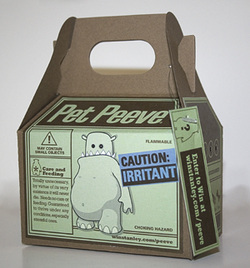 Chuck Sambuchino is one of the editors of Writer's Digest, an incredibly useful resource for writers. (If you don't have the cash to buy one, most libraries have a well-thumbed copy.)
Chuck Sambuchino is one of the editors of Writer's Digest, an incredibly useful resource for writers. (If you don't have the cash to buy one, most libraries have a well-thumbed copy.)He also writes a blog, the Guide to Literary Agents, in which he spells out exactly what agents are looking for. This is one of those posts that every aspiring writer should read before contacting an agent. Some of these "pet peeves" will make you laugh, others will make you cringe.
__________________________________________
Query Letter Pet Peeves – Agents Speak
By Chuck Sambuchino
Ready to send your book out and contact agents? The last thing you want to do is to rush that submission out the door and hurt your book’s chances.
When submitting your all-important query to agents or editors, it’s not just a question of what to write in the letter—it’s also a question of what not to write.
I asked 11 literary agents about their personal query letter pet peeves and compiled them below. Check out the list to learn all about what details to avoid in a query that could sink your submission—such as vague wording, too much personal information, grammatical mistakes, and much more.
———
“I think the biggest querying no-no I’ve ever seen was when an author tracked down some sensitive personal information and included it in their cover letter. Eeep! As agents we absolutely love when authors do their research and get to know our interests, but you want to always make sure what you include in your query letter is professional and that you don’t slip too far into the realm of the personal.
The biggest no-no I’ve seen recently probably would be authors whose query letters focus too much on their author bios and don’t tell me what their book is about! Make sure you put those essential story details up front.”
~ Shira Hoffman of McIntosh & Otis, Inc.
For more advice from Shira, click the link above.
———–
“I’ve received queries for ‘Dear Editor,’ ‘Dear Agent,’ ‘Dear Publisher,’ as well as e-mail queries that are addressed to 10 different agents together.”
~ Jacquie Flynn of Joelle Delbourgo Associates
For more advice from Jacquie, click the link above.
———
“Spelling errors or grammatical mistakes. They just make me want to stop reading.”
~ Lisa Leshne of LJK Literary Management
For more advice from Lisa, click the link above.
———
“Unfocused queries and the term ‘fiction novel.’ ”
~ Melissa Flashman of Trident Media Group, LLC
For more advice from Melissa, click the link above.
———
“I’m sick of vagueness. I get so many queries every day that don’t tell me enough about the novel. If there’s no reason for me to say yes, then it’s going to be no.”
~ Bridget Smith of Dunham Literary, Inc.
For more advice from Bridget, click the link above.
———
“[Just recently], somebody queried me with a YA fantasy—and in the place where they should have put their professional bio or a few sentences about themselves, they had taken on the persona of their main character and said something about the character instead … Queries are business letters. Agenting is a business. Publishing is a business. I try to be nice and friendly and funny and all, but the bottom line is that I expect those with whom I work to be professional and take what they’re doing seriously.”
~ Linda Epstein of Jennifer De Chiara Literary
For more advice from Linda, click the link above.
Click HERE to read the rest of this article.
Published on February 03, 2014 08:52
February 1, 2014
Detroit is for ... Writers
 All of this could be yours, someday. Organization Wants to Lure Writers to Detroit
All of this could be yours, someday. Organization Wants to Lure Writers to DetroitPublishers Weekly, Dec 19, 2013
By Claire Kirch
Write-A-House, a Detroit-based literary organization founded in 2012 by novelist Toby Barlow, hopes to energize the literary community in the Motor City by giving writers not just a room of their own, but an entire home. WAH launched an Indiegogo campaign on Tuesday to raise funds to begin renovating the first of the three homes already purchased by WAH that will be deeded to emerging writers after they have lived in them for two years. “It’s like a writer’s-in-residence program, but the writers get to keep the homes, forever,” states the Indiegogo page titled “Write A House: Renovation of the Peach House.” Members of Young Detroit Builders, an organization that trains young people how to rehabilitate and renovate houses, will do the actual work on the houses alongside a licensed contractor. The three houses that have been purchased to date are all within walking distance of one another in what WAH describes as neighborhoods that are “a rich quilt of culture and change.” WAH bought the three houses for a total of $2,000. Renovations to each is estimated to cost $50,000-$60,000.
WAH's housing program is open to writers anywhere in the world who are willing to relocate to Detroit. “Detroit visual arts & Detroit musical arts have gotten a ton of attention over the years, but we believe this is a city that could really use some more writers,” WAH’s Indiegogo page states, “Any and all writers who are looking for a new home and new inspiration are encouraged to apply.” WAH will begin accepting applications in spring 2014.
WAH hopes to raise $25,000 through Indiegogo in the next 60 days, which will cover approximately 50% of the cost of renovating the first house. The organization hopes to raise the rest of the funds needed through grants by local and national arts foundations. WAH intends to buy more existing housing stock in the city as needed to renovate and then award them to eligible writers. The median sales price for houses in the city itself in the fourth quarter is $41,000.
"Detroit has no shortage of affordable housing stock," Barlow noted, "Writers can take advantage of all the great stories and possibilities this city has to offer, and the affordable lifestyle. Living in these abandoned cities is one of the greatest opportunities. And with the Internet, you can stay in touch with what's going on in New York and LA, and not have to pay those astronomical prices for housing. It's tough being a writer right now." Barlow, who lived in Brooklyn for nine years and in San Franciso for another nine years, has lived in downtown Detroit for seven years.
Published on February 01, 2014 08:58
January 30, 2014
Literary Agents Seeking New Clients
 These three agents are looking for clients. All three are new to the scene, but their agencies are not. Be sure to read the agency's website. Look at the list of clients, see where they have been published, read their FAQs, and above all, pay careful attention to their submission guidelines.
These three agents are looking for clients. All three are new to the scene, but their agencies are not. Be sure to read the agency's website. Look at the list of clients, see where they have been published, read their FAQs, and above all, pay careful attention to their submission guidelines._________________________________________________
 Nadeen Gayle of Serendipity Literary Agency
Nadeen Gayle of Serendipity Literary AgencyAbout Nadeen: After representing clients in law for over 7 years, Nadeen Gayle brings her zeal for representation and championing voices to book publishing. Prior to graduating from Hofstra law school, Nadeen majored in English with a Mass Communications minor at Clark Atlanta University and was a very active participant in the English department’s annual Writers Conference. After receiving her BA in English, Nadeen taught briefly in the Atlanta public school system. Her short stint with students and parents in Atlanta shaped her focus with connecting to both children and adults after which she worked as counsel for Administration for Children Services. As a parent herself, Nadeen’s work with children and parents shapes her dual interest in both YA and Adult titles.
Nadeen’s law career was not without its share of great stories. Her love for entertainment and media took her to Court TV where she worked as a production assistant during its heyday. She is a big fan of narratives that are seamlessly written yet with ideas that might be stripped from the headlines. In addition, her experience in the Congressional Black Caucus Boot-Camp training furthered her interest in politics and the deal behind the deal.
What she is seeking: Romance, Memoir, Pop culture, Inspirational/Religious, Women’s Fiction, Parenting, Young Adult, Mystery and Political Thrillers, and all forms of Nonfiction.
How to submit: This agency takes submissions through its online form. They try to respond to queries as quickly as possible, but if you haven’t heard from them within 4-6 weeks, please feel free to resubmit. Click here for the submission form.
____________________________________________________
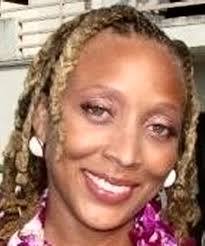 Foladé Bell of Serendipity Literary Agency
Foladé Bell of Serendipity Literary AgencyAbout Foladé: Foladé Bell began her career in publishing shortly after graduating from Howard University with a Bachelor of Arts degree in Communications. She brings a multifaceted background to Serendipity. Having worked within several fields, she brings a diverse background in various aspects of media, new media and publishing. A creative activist, Foladé cultivated her sales, negotiation and client management skills within positions at Reed Elsevier, Business Wire and Radio & Records. Since joining Serendipity Literary Agency, she is focused on unearthing the raw potential of new authors ready to enter the collaborative process as well as assisting existing authors advance their careers.
What she's looking for: Foladé is actively seeking to represent a broad range of projects. She is particularly drawn to: literary and commercial women’s fiction with a strong sense of story, voice and character; funny and relatable fiction; Daring YA books that showcase a fresh, unique perspective; literary mysteries/thrillers that aren’t formulaic or market saturated, contemporary historical fiction, African-American issues, gay/lesbian, Christian fiction, humor and books that deeply explore other cultures. No subject is out-of-bounds. She loves non-fiction that reads like fiction. Feel free to approach her with ideas adapted from blogs or websites with new views on pop culture.
How to submit: This agency takes submissions through its online form. They try to respond to queries as quickly as possible, but if you haven’t heard from them within 4-6 weeks, please feel free to resubmit. Click here for the submission form.
____________________________________________
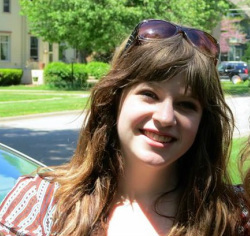 LAURA ZATS of Red Sofa Literary
LAURA ZATS of Red Sofa LiteraryAbout Laura: Laura Zats graduated from Grinnell College with degrees in English and anthropology. While completing her studies, she took advantage of her love of Young Adult (YA) literature and wrote a thesis on identity formation in YA. She’s been working as an editor for several years and has held positions at companies in both the US and the UK. In 2013, Laura joined Red Sofa Literary as an Associate Agent in 2013. In her free time, Laura likes to craft, swing dance, bake, and binge on Netflix marathons of Buffy the Vampire Slayer and Doctor Who.
What she is seeking: Young adult and middle grade (especially contemporary for both), romance, new adult, contemporary women’s fiction, sci-fi, fantasy, and erotica.
How to submit: Query laura [at] redsofaliterary.com Put “Query” in the e-mail subject line.
Published on January 30, 2014 10:50
January 26, 2014
Hugh Howey's Self-Publishing Success Story - Luck, Timing, and Writing for the Right Reasons
 Hugh Howey's success story does not fit into any of the myths instilled in us from early childhood.
Hugh Howey's success story does not fit into any of the myths instilled in us from early childhood. He was not discovered by a well-connected agent, or by an editor in a major publishing house. He did not win fame on his first try as a writer, nor did he work for years in a freezing attic, until, shortly before losing his fingers to frostbite, he finally achieved the recognition he so richly deserved.
Like most of us, Hugh Howey had a day job. He worked sporadically - and happily - at writing, putting his partially completed books up on Amazon for 99 cents, until one of them took off. This is not an unheard of chain of events for self-publishers on Amazon. In fact, it is the only way to make it on Amazon's platform.
What is unusual about Howey is that he remained a self-published author on Amazon's Kindle platform - even after he landed a book deal with Simon and Schuster. He also turned down offers from agents - until one of them dangled Hollywood before him.
Why did Howey stick with the hybrid model?
"It’s a wonderful way to build your readership. My recommendation to anyone who’s got a backlist or a career in a traditionally published model is to break out and test the waters in self-publishing. It’s not going to do anything but good for your career."
And for those of us who have not been published?
"You have as good a chance of winning a publisher over by getting sales going through your self-published works as you do submitting to the slush pile."
___________________________________
How Hugh Howey Turned HisSelf-Published Story “WOOL” Into a Success (& a Book Deal)
By Rachel Randall, managing editor for Writer’s Digest Books
At first, Hugh Howey’s decision to walk away from a small press contract and self-publish didn’t seem all that remarkable. After assuming complete control of his work, he kept his day job and began writing and releasing e-books (as well as some print books) in his off hours, happy to be simply sharing his stories with whatever readers might find them. But when one of those books, Wool, unexpectedly took off, everything changed. Howey found himself at the top of e-book bestseller lists—and at the forefront of a new age of publishing.
The opening chapters of Wool first appeared as a $0.99 e-book novella via Kindle Direct Publishing in July 2011; Howey had written the post-apocalyptic story, about a community of people living underground in giant silos, without intending to immediately follow it up with more installments. “I self-published it and went right back to my next work,” he says. But by October, Howey noticed Wool was eclipsing all of his previous works and was positioned to sell 1,000 copies by the end of the month. “I figured this was going to be the pinnacle of my career,” he says. So he promptly tabled the unrelated project he’d been planning for National Novel Writing Month and instead focused on writing more of the Wool saga.
What happened next is a story that rivals the success of self-made sensations Amanda Hocking, John Locke and E.L. James. The subsequent, rapid releases of the next four e-book installments of Wool rocketed Hugh Howey’s name to the top of Amazon bestseller lists in several categories. In January 2012, he released the Wool omnibus (the combined five parts), which spent two weeks on The New York Times e-book fiction bestseller list and received the Kindle Book Review’s 2012 Best Indie Book Award in the sci-fi/fantasy category. By that summer, Howey was selling 20,000–30,000 digital copies of Wool a month … and making a monthly salary of $150,000 from e-book sales alone. He quit his day job.
Read the rest of this article, including a revealing interview with Hugh Howey, HERE.
Published on January 26, 2014 13:05
January 24, 2014
Amazon - "Ruthless and Self-Absorbed" - Consumes Book Industry
 There is something fascinating about watching Amazon devour the book industry. It's like watching a snake wrapping itself around its mesmerized prey. From squeezing Random House to putting the screws on university presses, Amazon is the anaconda of the publishing world. The spectacle leaves us horrified, yet helplessly entranced.
There is something fascinating about watching Amazon devour the book industry. It's like watching a snake wrapping itself around its mesmerized prey. From squeezing Random House to putting the screws on university presses, Amazon is the anaconda of the publishing world. The spectacle leaves us horrified, yet helplessly entranced.Traditional publishers are hoping that Amazon will be distracted by selling nutritional supplements, or trade secrets to the DoD, but somehow I don't think that is going to happen.
______________________________________
DBW 2014: Amazon, Subscription and the Book Business
Publisher's Weekly, Jan 16, 2014
By Calvin Reid
Although the online retailer seemed to be the shadow topic behind most of the panels at DBW 2014, yesterday morning Amazon was front and center with presentations from Stone and Esposito—individually and in tandem—on the retailer's past and present business pursuits. Although most DBW attendees are familiar with the story, Stone took them on a trip through the recent past outlining Bezo’s aggressive pursuit of market share and Amazon’s expansions beyond books into streaming movies, toys, electronics and now, even fashion, filmmaking and TV shows through its Amazon Studio unit. It’s a story told quite well in Stone’s book: Bezo’s focus on customer satisfaction (fast delivery, great prices), razor-thin algorithm-driven profit margins and an ever-increasing enviable ability to exploit inefficiencies that Amazon seems able to identify before anyone else. It’s also the story of Bezo’s remorseless tactics and business culture—Stone noted Amazon’s notorious Gazelle Project that applied pressure on small publishers to get better discounts.
Stone said Amazon will “continue to be ruthless and self-absorbed” as it continues to disrupt new areas of the book industry and other media areas. Amazon has opened a new 44,000 square foot photo studio in Brooklyn to produce photographs for its apparel/fasion business. The retailer has a fast growing grocery business and both Stone and Esposito pointed to Amazon plans to launch its own TV set box. But these new ventures are unlikely to provide much solace to the book industry or distract Amazon from the book trade, both presenters said, because Amazon will continue its relentless pursuit of market share in the book industry. “If e-book sales flatten, they will look for new ways to boost them,” Stone said, “packaging books together,”—he cited Amazon’s Matchbook Project which bundles e-books with print—and there’s even the possibility Amazon will experiment with physical spaces, setting up its own showrooms to display books and other kinds of merchandise.
In other words, look for more of Amazon’s characteristic efforts to enter businesses and “build moats”—low prices and customer-stroking service built on tiny margins—around them that will continually feed its growth and discourage other companies from entering the same business category. Esposito (with a grant from Carnegie Mellon) has organized a university press research project to look at academic press book marketing.
Esposito outlined efforts by Amazon to squeeze ever-tougher terms from cash-strapped nonprofit university presses as well as its efforts to displace distributors like B&T and Ingram with cheaper prices and faster service. He even outlined a “supply chain paradox,” a case study of how Amazon orders titles from third-party distributors, gets them to ship books to libraries overnight packaged in an Amazon box—although paradoxically the same distributor would take longer to ship the title if the sale came to them directly. Esposito said Amazon has about a 10% share of the library market and is taking a growing share of overseas sales of academic titles, disrupting the roles of conventional distributors. “Amazon is thinking 3-5 years ahead and positioning themselves accordingly,” he said.
Published on January 24, 2014 08:08
January 22, 2014
The Secret to Writing a Best-selling Novel
 Computer scientists have developed an algorithm which can predict with 84 per cent accuracy whether a book will be a commercial success - and the secret is to avoid cliches and excessive use of verbs
...
Computer scientists have developed an algorithm which can predict with 84 per cent accuracy whether a book will be a commercial success - and the secret is to avoid cliches and excessive use of verbs
...
Scientists find secret to writing a best-selling novel
By Matthew Sparkes, The Telegraph, Jan 9, 2014
Scientists have developed an algorithm which can analyse a book and predict with 84 per cent accuracy whether or not it will be a commercial success.
A technique called statistical stylometry, which mathematically examines the use of words and grammar, was found to be “surprisingly effective” in determining how popular a book would be.
The group of computer scientists from Stony Brook University in New York said that a range of factors determine whether or not a book will enjoy success, including “interestingness”, novelty, style of writing, and how engaging the storyline is, but admit that external factors such as luck can also play a role.
By downloading classic books from the Project Gutenberg archive they were able to analyse texts with their algorithm and compare its predictions to historical information on the success of the work. Everything from science fiction to classic literature and poetry was included.
It was found that the predictions matched the actual popularity of the book 84 per cent of the time.
Find out what else these computer geeks discovered HERE.
Published on January 22, 2014 14:29
January 19, 2014
Where Everybody Has a Book in Their Belly
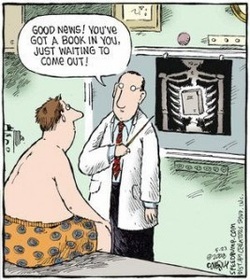 "Iceland is experiencing a book boom. This island nation of just over 300,000 people has more writers, more books published and more books read, per head, than anywhere else in the world."
"Iceland is experiencing a book boom. This island nation of just over 300,000 people has more writers, more books published and more books read, per head, than anywhere else in the world."Personally, I love the idea of park benches equipped with barcodes so people can listen to a book as they sit.
_________________________________
Iceland: Where one in 10 people will publish a book
By Rosie Goldsmith, BBC News Magazine
It is hard to avoid writers in Reykjavik. There is a phrase in Icelandic, "ad ganga med bok I maganum", everyone gives birth to a book. Literally, everyone "has a book in their stomach". One in 10 Icelanders will publish one.
"Does it get rather competitive?" I ask the young novelist, Kristin Eirikskdottir. "Yes. Especially as I live with my mother and partner, who are also full-time writers. But we try to publish in alternate years so we do not compete too much."
Special saga tours - saga as in story, that is, not over-50s holidays - show us story-plaques on public buildings.
Dating from the 13th Century, Icelandic sagas tell the stories of the country's Norse settlers, who began to arrive on the island in the late 9th Century.
Sagas are written on napkins and coffee cups. Each geyser and waterfall we visit has a tale of ancient heroes and heroines attached. Our guide stands up mid-tour to recite his own poetry - our taxi driver's father and grandfather write biographies.
Public benches have barcodes so you listen to a story on your smartphone as you sit.
Read the rest of this fascinating article HERE.
Published on January 19, 2014 09:05
January 16, 2014
2 Literary Agents Seeking New Clients
 These literary agents have opened their doors to new clients. As always, visit the website of their agencies, check their list of clients, check the publishers they work with, and read all submission requirements before contacting. (Click on the name of their agency for more information.) To check an agent's history (for possible complaints) go to Editors and Preditors. For general information about agents, go to Writer Beware.
These literary agents have opened their doors to new clients. As always, visit the website of their agencies, check their list of clients, check the publishers they work with, and read all submission requirements before contacting. (Click on the name of their agency for more information.) To check an agent's history (for possible complaints) go to Editors and Preditors. For general information about agents, go to Writer Beware.____________________________________
 Lara Perkins of Andrea Brown Literary Agency
Lara Perkins of Andrea Brown Literary AgencyAbout Lara: Lara Perkins is an Associate Agent and Digital Manager at the Andrea Brown Literary Agency. She has been with the agency for over three years, working closely with Senior Agent Laura Rennert, with whom she jointly represents a number of clients, in addition to building her own list. Recent deals, together with Laura Rennert, include Matthew Ward’s middle grade novel, THE FANTASTIC FAMILY WHIPPLE, sold in a two book, six-figure deal to Razorbill, and P.J. Hoover’s young adult novel, SOLSTICE, forthcoming with Tor Teen in June 2013. Lara has a B.A. in English and Art History from Amherst College and an M.A. in English Literature from Columbia University, where she studied Victorian British Literature. In her pre-publishing life, she trained to be an architect, before deciding that books, not bricks, are her true passion. She spent over a year at the B.J. Robbins Literary Agency in Los Angeles before coming to Andrea Brown Literary.
What she is seeking: Lara is a fan of smart and raw young adult fiction, character-driven middle grade fiction with a totally original, hilarious voice, and so-adorable-she-can't-stand-it picture books, preferably with some age-appropriate emotional heft. She's a sucker for a great mystery and is passionate about stories that teach her new things or open up new worlds. More than anything, she has a soft spot for the wonderfully weird, the idiosyncratic, and the entirely unexpected.
How to contact her : lara [at] andreabrownlit.com. The agency only allows writers to query one agent, so please do not query Lara if you have queried other Andrea Brown agents in the past. Submission instructions are explained in detail on the agency submission page here. (Read carefully before contacting Lara.)
____________________________________
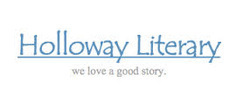 Nikki Terpilowski of Holloway Literary
Nikki Terpilowski of Holloway Literary
About Nikki: Nikki Terpilowski interned at a literary agency for a year before founding Holloway Literary. The agency only has 10 clients, and no street address. Several of the publishing houses Holloway works with also accept unagented manuscripts.
What she is seeking : Women's fiction, southern fiction, multicultural literary fiction, upmarket African-American fiction, steam punk, romance (all kinds except category), military and espionage thrillers, historical fiction, nonfiction with a strong platform and academic assessments of popular culture. Additionally, Nikki seeks graphic novels, Manga, YA, MG and children's picture books.
Nikki is especially interested in time travel, reincarnation, mythology, ancient civilizations, magical and animist realism, Japan, American history (especially hidden African-American history, interesting women in history, as well as the antebellum period, and the Civil and Revolutionary wars), the military (all branches, but especially the U.S. Marine Corp, Army and all Special Forces), espionage, martial arts, narrative nonfiction about food and beverage (especially organic food, wine and coffee), travel or expat life, international relations and foreign policy,and prescriptive nonfiction on spirituality, parenting, health and well-being.
Contact her at: submissions [at] hollowayliteraryagency.com. For fiction: send a one page query and the first fifteen pages of your ms in the body of the email. For nonfiction: send a proposal (and if relevant, link to related blog). Include a brief bio and social media links.
Published on January 16, 2014 08:36
January 14, 2014
Brain function is boosted for days after reading a novel
 Brain function 'boosted for days after reading a novel'
Brain function 'boosted for days after reading a novel'Source: The Independent, December 28, 2013
By Tomas Jivanda
Being pulled into the world of a gripping novel can trigger actual, measurable changes in the brain that linger for at least five days after reading, scientists have said.
The new research, carried out at Emory University in the US, found that reading a good book may cause heightened connectivity in the brain and neurological changes that persist in a similar way to muscle memory.
The changes were registered in the left temporal cortex, an area of the brain associated with receptivity for language, as well as the the primary sensory motor region of the brain.
Neurons of this region have been associated with tricking the mind into thinking it is doing something it is not, a phenomenon known as grounded cognition - for example, just thinking about running, can activate the neurons associated with the physical act of running.
“The neural changes that we found associated with physical sensation and movement systems suggest that reading a novel can transport you into the body of the protagonist,” said neuroscientist Professor Gregory Berns, lead author of the study.
“We already knew that good stories can put you in someone else’s shoes in a figurative sense. Now we’re seeing that something may also be happening biologically.”
21 students took part in the study, with all participants reading the same book - Pompeii, a 2003 thriller by Robert Harris, which was chosen for its page turning plot.
“The story follows a protagonist, who is outside the city of Pompeii and notices steam and strange things happening around the volcano,” said Prof Berns. “It depicts true events in a fictional and dramatic way. It was important to us that the book had a strong narrative line.”
Over 19 days the students read a portion of the book in the evening then had fMRI scans the following morning. Once the book was finished, their brains were scanned for five days after.
The neurological changes were found to have continued for all the five days after finishing, proving that the impact was not just an immediate reaction but has a lasting influence.
“Even though the participants were not actually reading the novel while they were in the scanner, they retained this heightened connectivity,” added Prof Berns. “We call that a ‘shadow activity,’ almost like a muscle memory.”
Note: You can read the full study HERE.
Published on January 14, 2014 09:55



